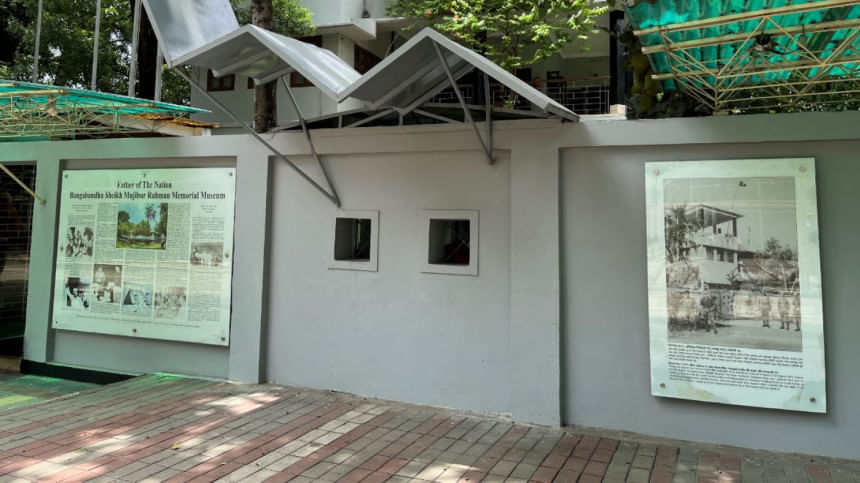An Indian in Dhanmondi 32

In May 2022, when I passed through the international departures at the Netaji Subhas Chandra Bose International Airport at Kolkata in India, the security personnel checked my passport and re-checked my ticket to Dhaka. With a strange smirk, he asked me, "Is there anything worth seeing in Bangladesh?"
I was not sure whether it was his sheer ignorance or an assault on his masculine self, seeing a woman travelling solo to Bangladesh. I had a long bucket list to cover in Bangladesh but instead mentioned the Dhakeswari Temple and the Liberation War Museum. He was surprised to hear that there were temples too. While YouTubers vlogging from Bangladesh made me anticipate my trip to be liberating already, people around me in India were cautious of the news they often heard of. Religious tensions, women needing to cover themselves in public spaces, or the mobile and money snatchers around Dhaka.
After a long stay in Dhaka and roaming around solo in local transports like the rickshaws, red coloured double decker buses, and mostly auto rickshaws, I am looking forward to visiting the country again. It was walking down the lanes around Mohammadpur where I stayed that made Dhaka very friendly and familiar to me. I realised, even if not mandatory, following the culture of a nation where we travel as visitors might just make certain things simple. My attempt at speaking broken Bangla and wearing loose clothes must have saved me from unwanted gazes on the roads, which I felt back at the airport where I was apparently a foreigner.
On May 11, I walked towards Dhanmondi 32 from Asad Gate. It housed the Bangabandhu Bhaban, which was once the residence of Bangabandhu Sheikh Mujibur Rahman, the Father of the Nation. It was later turned into the Bangabandhu Memorial Museum, open for visitors.
The house bore witness to the assasination of Bangabandhu along with his family, close relatives, and acquaintances in the pre-dawn hours of August 15, 1975. While his wife Begum Fazilatunnesa Mujib, eldest son Sheikh Kamal and his wife Sultana Kamal, second son Sheikh Jamal and his wife Rosy Jamal, and youngest son, then five years old, Sheikh Russel were gunned down, Sheikh Mujibur Rahman's daughters, Sheikh Hasina and Sheikh Rehana, survived as they were abroad.

I remember Russel's name well enough as the museum displayed his aquarium and toys, particularly a small clock, a white ball, and a toy car. Except for passports and purses, one is not allowed to take anything inside the museum including paper and pen. Your photograph is clicked on the entrance and only then can you enter the premises. Hearing I was from India, the photographer gave me a big, friendly smile. There were around twenty guards outside the barricaded house. Inside, there was at least one person at each room having a watchful eye on the visitors.
Unlike usual museums where paintings would adorn the wall, sculptures would be displayed in a separate room, and antiques be placed on glass cupboards, the fact that I was walking down the well-furnished house, room after room, looking closely at the bullet marks on the walls and the mirrors, the half-filled water bottles on the dining table, the blood stains of Bangabandhu on the stairs, or the golden sandals and the wedding saree of one of the daughters-in-law in their room, gave me chills. I wanted to come out of the museum. The red orna hand embroidered by the current Prime Minister of Bangladesh, Sheikh Hasina, for her sister-in-law was too much to bear.
As I was walking through the Bangabandhu Bhaban, I realised how important these memorials are for the new generations living in Bangladesh as well as for outsiders like us to have a sense of its difficult political history. I followed the arrow leading out to the gate I entered from. I spotted the white, wooden, pigeon house of Bangabandhu's family that was still there. It was filled with white pigeons. I thought how tough it must be for the surviving sisters to live with the memories of losing their entire family overnight. Could they heal or continue to endure the pain and regret? No one knows.
Having come from Northeast India which once saw such brutal killings and violence in its insurgency period, I was deeply disturbed thinking what it would take for people to heal from such injustices in the past? I had no answers.
I walked out of the house and bought a few books on Bangabandhu's life from the souvenir shop. The lady at the shop asked me if I was an Indian and then gifted me a notebook. I walked around the Dhanmondi lake for some time. There was peace. Young people were taking selfies. Walking back towards Asad Gate, I ate a sandwich at Cooper's, bought mishti doi for my host, saw the skilled shawarma makers attending to their customers, and ended up buying locally manufactured T-shirts for my brothers.
Bangladesh sure was prospering and watching the youth indulge in social activities or something as small as attending to the tourists who might have lost their way. The country is surely on its path of becoming a desired travel destination in South Asia in collaboration with its creative youth ambassadors.
In the light of August 15, I keep my new friends from Bangladesh in my thoughts as they mourn the death of Bangabandhu Sheikh Mujibur Rahman. As long as the people of Bangladesh can freely assert their rights and create democratic spaces to challenge fascist forces through their work and attitude, Bangabandhu's soul would surely be at peace.
The writer is a postdoctoral fellow at NESRC, Guwahati, India.

 For all latest news, follow The Daily Star's Google News channel.
For all latest news, follow The Daily Star's Google News channel. 








Comments